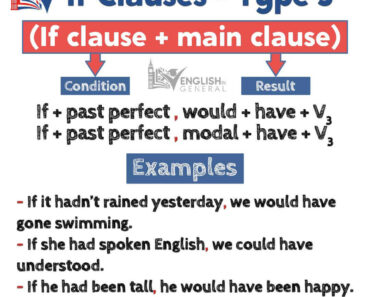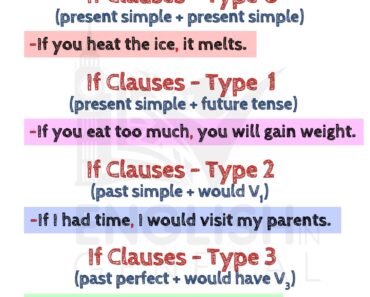
When do we use the first conditional sentence or if-clause type 1?
In general, conditionals are used for ideas or situations that depend on another. They are, so to speak, tied to a condition. In particular, the first conditional sentence, which is also often called if-clause type 1, is used in the following cases:
Examples of the use of the first conditional sentence (if-sentence 1) for circumstances that could arise due to a condition that is likely to be met:
“If she comes home late, she will get in trouble.” (If she gets home late, she’ll get in trouble.)
The condition (arriving late) is quite likely and can be met.
“If you buy it now, you’ll save a lot of money.” (Buying it now will save you a lot of money.)
The condition (buy) is also likely here and can be fulfilled.
… to give advice or instructions. Then the imperative (command form) is used instead of ‘will’:
“If you don’t like it, don’t eat it.” (If you don’t like it, don’t eat it.)
“Listen carefully if you don’t want to miss anything.” (Listen carefully if you don’t want to miss anything.)
To find the right if-sentence, you can follow the comparison of the conditionals.
How is the first conditional sentence (if-clause type 1) formed?
Basically, a conditional sentence in English always has two sub-clauses. One of them usually starts with the word “if” and indicates the condition, while the other gives the result. In fact, it doesn’t matter which of the two clauses begins the sentence; however, if ‘if’ is at the beginning, there must be a comma between the two clauses. In some cases “if” can also be replaced by “when”.




